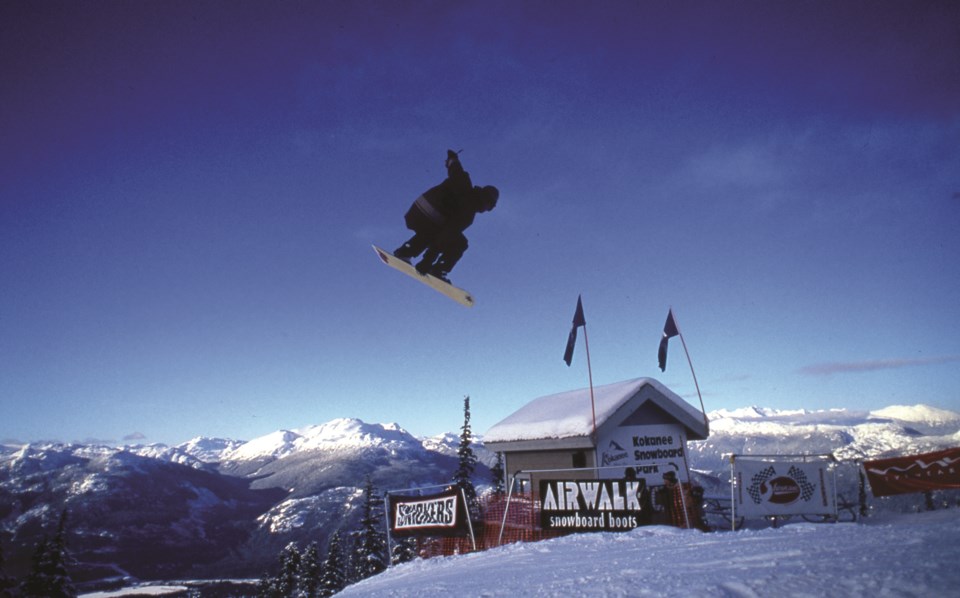Blackcomb Mountain opened for snowboarders in the 1987-88 season. While it would take Whistler another year to start embracing snowboard culture, Blackcomb was generally supportive of the “knuckle-draggers,” thanks to the persistence and passion of a few snowboarders on staff and in the community. Additionally, Blackcomb general manager Hugh Smythe could see the strategic benefits of welcoming a new group of riders.
Before terrain parks were a common feature of ski resorts, snowboarders would travel from all around Canada and the world to take advantage of the many natural features of Blackcomb, perfect for sending big air and pushing the boundaries of the new sport, like the natural quarterpipe and wind lip on Blackcomb featured in many publications and films, including the cover of Transworld Snowboarding with Doug Lundgren. Before the official park was created, groups would also build their own kickers and crude halfpipes on the mountain. This sometimes involved trying to avoid the watchful eye of ski patrol.
Stu Osborne was instrumental to the snowboarding scene on Blackcomb. Stu started as an instructor and went on to become snowboard coordinator and then terrain park supervisor, founding the first Blackcomb management-sanctioned halfpipe and snowboard park. While the Kokanee Snowboard Park officially appeared on the Blackcomb trail map in the 94-95 winter season, the first halfpipe and park launched earlier.
There, skiers-versus-snowboarders mentality still existed at this time, and despite receiving approval to create the initial halfpipe, accessing the resources from the Blackcomb operations team necessary to build the park was a different story. To get around the lack of resources, Snow Ejectors, a private snow removal company, became a sponsor, providing custom-painted shovels for the build. The early halfpipe was created using these shovels and a little cat time.
During a competition featuring many of the world’s best riders, the Snow Ejectors’ hand-painted banner was larger than those of any of the other sponsors, much to the chagrin of Blackcomb management. The next year, more equipment and support was provided by Blackcomb Mountain. Before the opening of the Kokanee Snowboard Park, Blackcomb became one of the first resorts in Canada to purchase a pipe dragon, a piece of specialized grooming equipment capable of carving out a uniform halfpipe far more easily than hand-digging.
In the early days, “Blackcomb Snowboard Park” was exactly that—a park for snowboarders. Rules had changed (at least in this one niche area on the mountain), while a big sign specified there were “no skiers allowed.” Skiers would wait outside the snowboard park in groups, and bomb the park together in a train so they were harder to catch. It wasn’t long, however, until the park evolved to welcome both snowboarders and skiers as the more inclusive “terrain park” that we know today.
Originally, the park features on Blackcomb and other resorts in the Canada West Ski Areas Association were rated like ski runs, with greens, blues, blacks and double blacks. As most people probably understand, riding a beginner feature requires different skills than a typical green run; however, the system broke down when a visitor went off a jump that was far beyond their ability and sustained a debilitating injury. The resulting lawsuit was eventually settled out of court and, learning from this experience, the ratings in the terrain park were changed to the same ones we see today.




